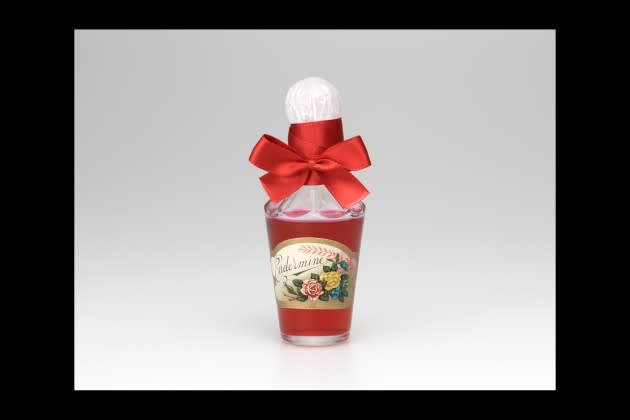Shiseido at 150: A Timeline

Shiseido has come a long way since its founding 150 years ago. What began as a single store in Tokyo has since blossomed into a global behemoth with sales of over 1 trillion yen — more than $9 billion — in 2021, with a market capitalization of over $22 billion. The company has more than 40,000 employees and markets 31 brands in 120 countries, primarily in the prestige and mid-priced range. Here, a look at how it all started.
1872: Arinobu Fukuhara opens Japan’s first private Western-style pharmacy in Ginza. The name Shiseido derives from a Chinese expression meaning, “Praise the virtues of the earth which nurtures new life and brings forth significant values.” The name embodies Shiseido’s stance as a company that married the best of the East and West, according to Ohki Toshiyuki, director, Shiseido Corporate Museum. IMAGE
More from WWD
1888: Shiseido introduces Japan’s first toothpaste. (Prior to this, only tooth powder was available.) IMAGE
1897: Eudermine — whose name derives from the Greek for “good” (eu) with “skin” (derma) — launches. It becomes known as Shiseido’s “red water.” IMAGE BUT DON’T NEED TO USE AS IT IS ON THE COVER
1902: Fukuhara installs Japan’s first soda fountain, kicking off a craze for ice cream — a rarity at the time. IMAGE
1908: Shinzo Fukuhara, the third son of Arinobu, enrolls at Columbia University in New York, to study pharmacology. IMAGE
1915: The hanatsubaki — or camellia — is chosen as the company trademark. Shinzo Fukuhara, the company’s president and son of Arinobu who is a respected photographer in his own right — designs the logo. IMAGE
1917: Hanatsubaki fragrance launches, the first scent created, marketed and sold in Japan by the Japanese. IMAGE
1919: The Shiseido Gallery is established, now the oldest existing art gallery in Japan.
1923: The Great Kanto Earthquake hits Tokyo. Shiseido lost its store, manufacturing facilities and warehouse. Following the earthquake, employees passed out ice cream left in the machine to evacuees in a nearby park.
1927: Shiseido changes its limited partnership to a joint stock company called Shiseido Co. Ltd. Shinzo Fukuhara becomes its first president. IMAGE
1928: Shiseido introduces its Western logo. The Shiseido Parlor also reopens, causing a sensation by serving Western-style food in silver dishes. IMAGE
1933: Marlene Dietrich stars in ads for Cream Face Powder.
1934: Miss Shiseido, nine women who were the forerunners of beauty consultants, are introduced. They were chosen from over 240 women who applied and they provided one-on-one beauty advice to shoppers. IMAGE
1939: The first freestanding Research and Development Lab is completed.
1940: During World War 2, Shiseido ceases production of cosmetics, instead producing daily necessities for survival during the period. Its first post-war launch was a red nail enamel called Tsumabeni.
1949: Shiseido lists on the Tokyo Stock Exchange.
1951: De Luxe, then Shiseido’s most premium cosmetics brand, relaunches after being terminated during the War. IMAGE
1954: Shiseido introduces liquid shampoo to Japan. It takes off six years later.
1957: Shiseido starts selling in Taiwan.
1961: Shiseido introduces its first makeup campaign. Called Candy Tone, it features seven lipstick shades and kicked off the brand’s tradition of seasonal color campaigns. HOPEFULLY IMAGE TO COME
1962: Shiseido of Hawaii, its first overseas investment, opens.
1963: Ciao Shiseido! The company enters Italy, its first European market.
1965: Shiseido Cosmetics America, originally called House of Zen, is established. Subsidiaries in Singapore Italy, Thailand and New Zealand follow.
1977: Shiseido brings six Parisian designers, including Claude Montana and Thierry Mugler, to Japan, sponsoring shows held in seven cities. HOPEFULLY IMAGE TO COME
1980: French artist Serge Lutens is named creative director. He’s credited with creating an international image for Shiseido, and his image of a woman swimming with a large red disc against a black background is both a company and industry icon. HOPEFULLY IMAGE TO COME
1981: Shiseido starts selling cosmetics in Beijing.
1986: Ipsa, meaning “self” or “spontaneous” in Latin, launches in Japan. Today it is sold there and in five other Asian markets.
1989: Shiseido teams up with Harvard University to establish the world’s first dermatological research center, called the Cutaneous Biology Research Center, at Massachusetts General Hospital.
1991: Shiseido opens its first manufacturing base in Europe.
1992: Les Salons du Palais Royal Shiseido opens in Paris, the spectacular perfumery designed by Serge Lutens. IMAGE
2000: Shiseido acquires Nars.
2007: Oh là là. L’Osier, which opened in 1973, earns three stars in the Michelin Guide.
2009: Shiseido becomes the first cosmetics company in Japan to receive the “Eco-First Company certification from the Ministry of the Environment.
2013: Shiseido opens a new head office building in Ginza, which becomes the hub for new value creation. It is the latest of three major company architectural edifices in Ginza. IMAGE
2019: Shiseido opens the $400 million Global Innovation Center in Yokohama, Japan.
Sign up for WWD's Newsletter. For the latest news, follow us on Twitter, Facebook, and Instagram.
RSVP for "A Matter of Style", a Fairchild Archive exhibition September 9-10 in New York City.

